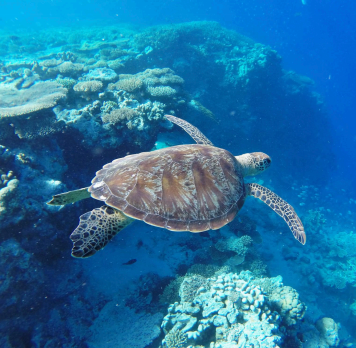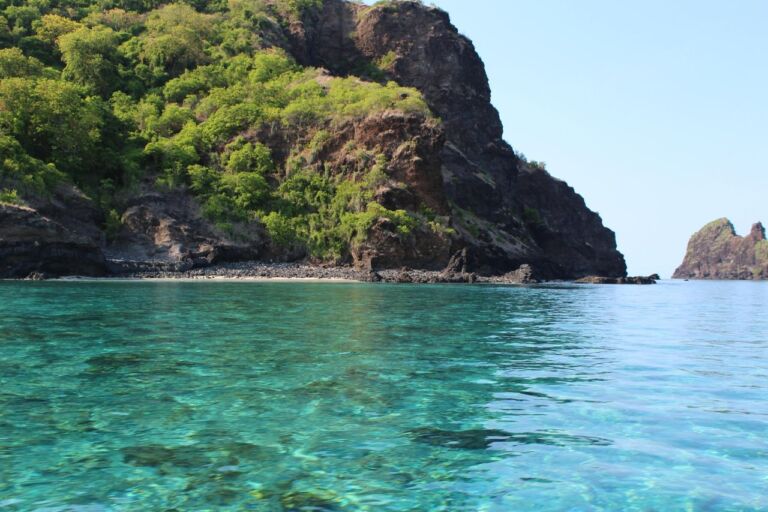
The island of Mayotte is an overseas Department of France (Département de Mayotte). It is necessary to obtain Visa’s for both the Union of Comoros and France (Schengen) – not applicable to US Citizens!
Overview
This tour takes in the 4 islands making up the Comoros archipelago, the island chain is of volcanic origin, ranging from the oldest, Mayotte, in the east to the youngest, Grand Comoro in the west. The three island of Grand Comoro, Moheli and Anjouan form the Union of the Comoros, an independent nation, with the Capital seated in Moroni, Grand Comoro. The 4th and final island, Mayotte, is a French overseas department. The island chain is host to no less than 26 endemics which could climb to well over 30 with further taxonomic studies and future splits. We will endeavour to see all of these as well as, as many as possible endemic sub-species. Mammals are few and far between with several introduced species seen from time to time but one that is most certainly worth the effort to see, the enormous prehistoric looking, all black Livingstone’s Fruit Bat, these giant bats (with a 1.4m wingspan) are endemic to the Comoros and are only found on the islands of Anjouan and Moheli. Listed as critically endangered we will make a concerted effort to see these incredible beasts.
Detailed Itinerary
Day 1 – Arrival on Grand Comoro
Your International flights will arrive in Moroni today with most flights arriving mid-afternoon. You’ll be met by your guide and tour leader and after all the luggage has been loaded, we’ll waste no time in getting to our nearby hotel. Most people will opt to take it easy for the rest of the afternoon after their long international flights but a walk around the grounds might be an option for some. Grand Comoro Sunbird, Bronze Mannikin (introduced) and Malagasy Bulbul are usually easy to find and this is probably the best place to look for Tambourine Dove. O/N Itsandra Beach Hotel & Resort (formerly Golden Tulip Resort), Moroni, Grand Comoro.
Day 2 – Mt. Karthala
Today we’ll head out early as we plan to tackle the 2360m Mt. Karthala, one of the world’s largest active volcanoes with arguably the largest caldera (3km x 4km) of them all. As of late it has become possible to ascend almost all the way in a 4x4 on a very good paved track leading through the forest, up the mountain. In the past this used to entail a rather strenuous 6km hike and having to camp near the summit but fortunately we now opt to head back to the comfort of our hotel after our night vigil for the endemic Karthala Scops Owl. As we make our way up we’ll stop at various transitional zones with quite a bit of time spent in the best patches of forest where we’ll look for the endemic Kirk’s White-eye, Comoros Cuckooshrike, Comoros Olive Pigeon and the rather stunning Comoros Blue Pigeon, fortunately most of these are fairly easy to find. We’ll also be on the lookout for Comoro Thrush (3 of the island has its own unique race and they might well be elevated to species status in future), Grand Comoro Brush Warbler, Grand Comoro Bulbul, very similar to Malagasy Bulbul which it replaces at higher altitudes and Humblot’s Flycathcer, a species in its own genus. As we exit the forest and enter the heath zone towards the summit we’ll keep a lookout for small feeding flocks of Karthala White-eye, superficially very similar to Kirk’s but with a different call and slightly more green below, Malagasy Stonechat is common here and the occasional Malagasy Harrier could be spotted patrolling the area. Towards the end of the day as we drop back down into the forested zone to wait for dusk and hopefully our first signs of Karthala Scops Owl, we will try to get everyone good views if this, our first of four, endemic Scops Owls. We’ll head down and back to the hotel shortly after. O/N Golden Tulip Resort or similar, Grand Comoro.
Day 3 – Salimani secondary forest
A slightly more relaxed morning as we make our way to the village of Salimani to the south of Moroni from where we will access an area of secondary forest that is a known stakeout for the rather inexplicably rare Grand Comoro Drongo, the same area should yield more opportunities for some of the birds we encountered yesterday and we should find the likes of Grand Comoro Fody, Greater and Lesser Vasa Parrots as well as the endemic Humblot’s Sunbird. The afternoon might see us head back to Mt. Karthala depending if there were any crucial species missed the previous day. O/N Golden Tulip Resort or similar, Moroni, Grand Comoro.
Day 4 – Grand Comoro to Moheli
Most flights from Moroni to the other islands seem to be fairly early in the morning so hopefully this will be the case today, which should see us landing on Moheli after about 20 minutes in the air. Our lodge is barely 5 mins from the airport, we’ll go and check in and depending on the time of day we might opt for lunch first before heading out for our first taste of birding on Moheli. This afternoons birding will be rather relaxed, we’ll drive to a few spots where we will get out and bird in the hopes of finding Moheli and Malagasy Brush Warblers, the “Moheli” race of Comoros Thrush, Moheli Sunbird and perhaps even the stunning Comoros Blue Vanga. This will also be our first shot at our second endemic Owl, Moheli Scops Owl which should hopefully be in the bag early on allowing us to get back to the lodge for dinner. O/N Auberge Les Abou, Fomboni, Moheli
Day 5 - Miringoni
Early breakfast will see us head towards the west of the island towards the village of Miringoni, we will access some of the forests here in the hopes of finding arguably the toughest of the Comoro endemics, Comoro Green Pigeon, a fairly steep but short hike will get us to some fig trees that will hopefully hide a few Green Pigeons. This is also a good area for the very elusive “Moheli” race of Comoro Cuckooshrike, possibly a future split. We’ll again be on the lookout for Comoros Blue Vanga, Olive Bee-eater and we have spotted Malagasy Harrier in this area as well. On the way back to the lodge we’ll stop in a few places overlooking the ocean in the hopes of spotting Lesser Frigatebird, Masked Booby and the temptator race of Persian Shearwater that is suspected to breed on Moheli. O/N Laka Lodge, Nioumachoi, Moheli
Day 6 – Moheli to Anjouan
Depending on the time of our flight we might do some birding nearby before boarding our flight to the island of Anjouan. Anjouan is by far the most populated island and subsequently also the most deforested with vast areas of former forest now under cultivation to supply the French perfume industry. Our hotel is not too far from the airport and after dropping our bags we should have enough time for our first crack at Anjouan Scops Owl. O/N Karama Hotel or similar, Mutsamudu, Anjouan.
Day 7 – Lake Dzialandee and Moya Forest
We’ll start our day driving towards Lake Dzialandee, now only a very short hike from where we park the car thanks to a new road that is under construction, the small crater lake is home to Little Grebe, Common Moorhen and Malagasy Kingfisher and we hope to see the local race of Madagascar Cuckoo Roller, Malagasy Paradise Flycatcher, Malagasy Turtle Dove and Anjouan Brush Warbler. After some more exploring around this area we’ll head to Moya for lunch from where we will head for the once vast Moya Forest, the little remnants that remain still hold Anjouan Scops Owl and we’ll hope for these at a local stakeout and hopefully also find the likes of Crested Drongo, Anjouan Sunbird and the “Anjouan” race of Comoros Thrush. O/N Karama Hotel or similar, Mutsamudu, Anjouan.
Day 8 – Anjouan to Mayotte (possibly via Moroni, flight schedule dependant)
Our last island-hopping flight will see us arrive on Petit-Terre, the smaller of the two islands making up Mayotte from where we will transfer to Grande-Terre and onwards to our comfortable lodge. Mayotte, a French Foreign Territory, with a per capita income at least 10x higher than the Union of Comoros boasts far better infrastructure all round and hotels and restaurants are far superior. Birding is also somewhat easier on Mayotte with all our targets possible from our comfortable lodge. The afternoon should provide ample birding in the lodge ground where we should easily find the best looking of the endemic White-eyes, Mayotte White-eye, the gorgeous Mayotte Sunbird, Mayotte Drongo and in the evening Mayotte Scops Owl. O/N Le Relais Forestier or similar, Mayotte
Day 9 – Lodge Grounds and Pointe Mahabou
No rush this morning as we seek out whatever we might have missed yesterday, with ample time to get some really good photos of the likes of Comoros Blue Pigeon, Comoros Olive Pigeon, Cuckoo Roller and Malagasy Paradise Flycathcer. In the afternoon we’ll heaf for Pointe Mahabou from where we will search the mudflats for Crab Plover as well as several species of migrant shorebirds and Terns. This evening we’ll have another shot at Mayotte Scops Owl. O/N Le Relais Forestier or similar, Mayotte
Day 10 – End of Tour
After breakfast we’ll head back to Petite-Terre for our International flights to Nairobi, Kenya where we will spend the night before embarking on our flight to Seychelles on the 23rd for the start of the Seychelles leg of the tour.
THE ABOVE QUOTE INCLUDES
1. Vehicle
2. Fuel
3. All lodging
4. All meals from dinner on Day 1 to breakfast on Day 10
3. Full time bird guide/ tour leader
3. Meals and accommodation for tour leader/guide
4. Mineral water
5. All entrance fees
6. Internal flights
THE QUOTE EXCLUDES
1. Items of a personal nature
2. Any drinks besides mineral water
3. All optional activities not mentioned in the itinerary
4. International Flights, Airport Taxes & Visa Costs
5. Travel and/or personal Insurance
6. Telephone calls
7. Laundry
8. Special gratuities
Important Notice
Please be aware that some of the birding areas mentioned in this itinerary are remote and can become inaccessible due to bad weather, bush fires or poor road conditions and in these cases the guide will change, substitute or omit a particular spot at his/her discretion.
Inter-island flights are notorious for last minute changes, keep this in mind as the tour leaders might have to come up with last minute alternatives, fortunately we have the option of boat transfers if flights are cancelled.
A moderate level of fitness is required for some of the hikes, some trails are uneven, narrow and can be slippery after rain. Walking sticks are highly recommended as are good sturdy shoes.
Please bring protective gear for your camera equipment and other electronics you plan to take with you on hikes, the Comoros lies in the tropics so rain can be unpredictable.
The Union of the Comoros is very poor and lodges/hotels are basic but clean (Moheli and Anjouan) with electricity and hot water to mid-range and comfortable (Grand Comoro and Mayotte). Food is reasonably good especially the seafood. Vehicles tend to be neglected so might not always be up to the standard you are used to, fortunately driving distances are short with little traffic.





















